No products in the cart.
Home Improvement, Lawn and Gardening, Plants and Planters, Plants Saplings
Succulent String Of Dolphins
NPR 450.00 NPR 550.00
String of Dolphins, scientifically known as Senecio peregrinus, is a unique and charming succulent plant that belongs to the Senecio genus. It is a hybrid plant created through crossbreeding between Senecio rowleyanus (String of Pearls) and Senecio articulatus (Candle Plant). String of Dolphins is named for its trailing stems adorned with small, curved leaves that resemble leaping dolphins, making it a visually distinctive and appealing addition to succulent collections.
Facts about succulent string of dolphins
- Appearance: String of Dolphins has cascading or trailing stems that produce small, curved leaves with a striking resemblance to leaping dolphins or jumping fish. The leaves are typically green with white “spots” or “fins” along their edges, adding to the dolphin-like appearance.
- Size: Mature String of Dolphins plants can reach lengths of up to 2 to 3 feet (60 to 90 centimeters), making it an excellent choice for hanging baskets or containers.
- Origin: This succulent is a hybrid plant created from two other Senecio species: Senecio rowleyanus (String of Pearls) and Senecio articulatus (Candle Plant). It is not found in the wild and is a result of cultivation.
- Light: String of Dolphins thrives in bright, indirect sunlight to partial sun. It appreciates ample light to maintain its unique appearance but should be protected from intense, direct sunlight to prevent sunburn.
- Temperature: Maintain temperatures between 60°F to 75°F (15°C to 24°C). Protect the plant from drafts and temperature extremes.
- Watering: Allow the top inch (2.5 cm) or so of the soil to dry out between waterings. Water thoroughly when needed, but be cautious not to overwater, as succulents are prone to root rot if the soil remains consistently wet.
- Soil: Plant String of Dolphins in well-draining succulent or cactus potting mix to ensure proper drainage. You can enhance drainage by adding perlite or coarse sand to the soil mix.
- Container: Choose a pot or hanging basket with drainage holes to prevent water from accumulating at the bottom.
- Fertilization: Feed your String of Dolphins sparingly with a balanced, water-soluble succulent fertilizer diluted to half strength during the growing season (spring and summer). Reduce or eliminate fertilization during the dormant period in fall and winter.
- Humidity: These succulents are well-suited to typical indoor humidity levels and do not require additional humidity.
- Pruning: Prune your plant as needed to control its size and encourage bushier growth. You can trim leggy stems to promote branching.
- Propagation: String of Dolphins can be propagated from stem cuttings. Allow cuttings to callus for a day or two before planting them in well-draining soil.
- Pests and Diseases: While generally pest-resistant, occasionally check for common succulent pests like mealybugs and aphids. Remove pests manually or treat with a suitable insecticide.
- Maintenance: Keep the container clean and remove debris or dead leaves from the surface to prevent pests and maintain the plant’s aesthetic appeal.
Care tips-
- Light: Place your String of Dolphins in bright, indirect sunlight to partial sun. It thrives with ample light to maintain its unique appearance but should be protected from intense, direct sunlight, which can cause sunburn.
- Temperature: Maintain temperatures between 60°F to 75°F (15°C to 24°C). Protect the plant from drafts and extreme temperature fluctuations.
- Watering: Allow the top inch (2.5 cm) or so of the soil to dry out between waterings. Water thoroughly when needed, ensuring that excess water drains from the pot. Be cautious not to overwater, as succulents are susceptible to root rot if the soil remains consistently wet.
- Soil: Plant your String of Dolphins in a well-draining succulent or cactus potting mix to ensure proper drainage. Adding perlite or coarse sand can improve drainage further.
- Container: Choose a pot with drainage holes to prevent water from pooling at the bottom. Repot the plant as needed to accommodate its growth.
- Fertilization: Feed your String of Dolphins sparingly with a balanced, water-soluble succulent fertilizer diluted to half strength during the growing season (spring and summer). Reduce or eliminate fertilization during the dormant period in fall and winter.
- Humidity: String of Dolphins is well-suited to typical indoor humidity levels and does not require additional humidity.
- Pruning: Prune your plant as needed to control its size and encourage bushier growth. Trimming leggy stems can promote branching and a more compact appearance.
- Propagation: String of Dolphins can be propagated from stem cuttings. Allow cuttings to callus for a day or two before planting them in well-draining soil.
- Pests and Diseases: While generally pest-resistant, occasionally check for common succulent pests like mealybugs and aphids. Remove pests manually or treat with a suitable insecticide.
- Maintenance: Keep the container clean and remove debris or dead leaves from the surface to prevent pests and maintain the plant’s aesthetic appeal.
Based on 0 reviews
Only logged in customers who have purchased this product may leave a review.
Vendor Information
- Store Name: Ajambari
- Vendor: Ajambari
- No ratings found yet!
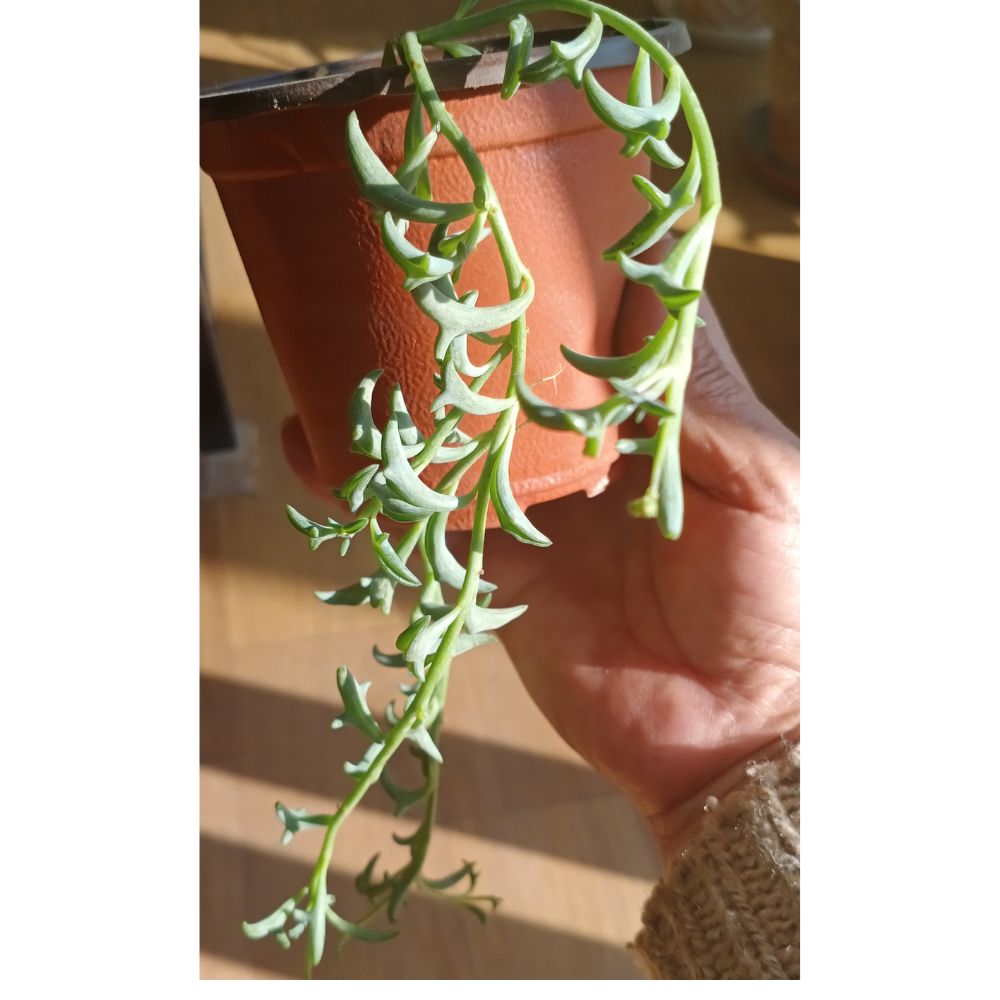


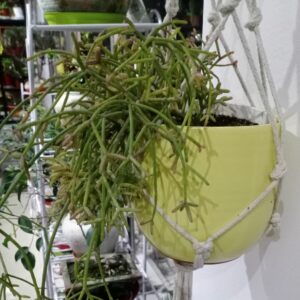
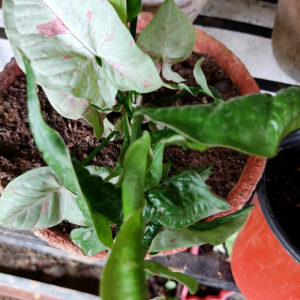
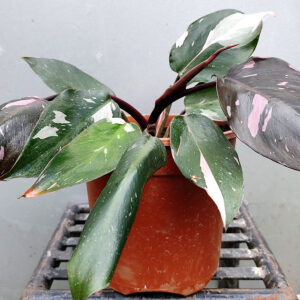
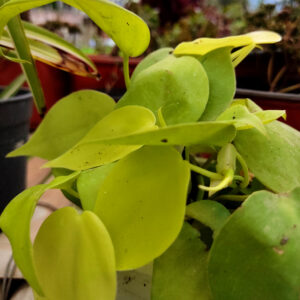

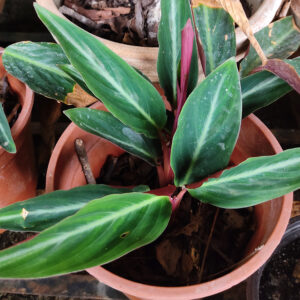
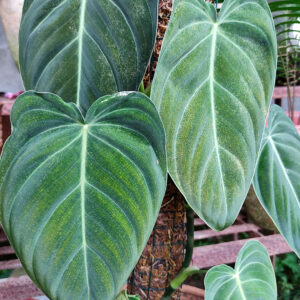
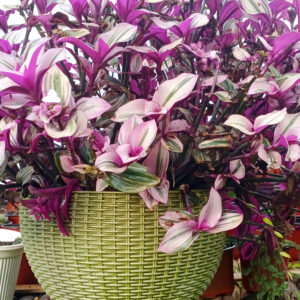
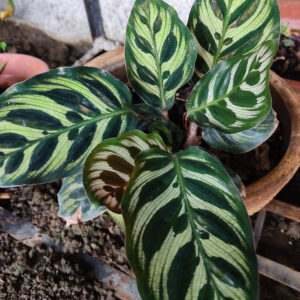
There are no reviews yet.